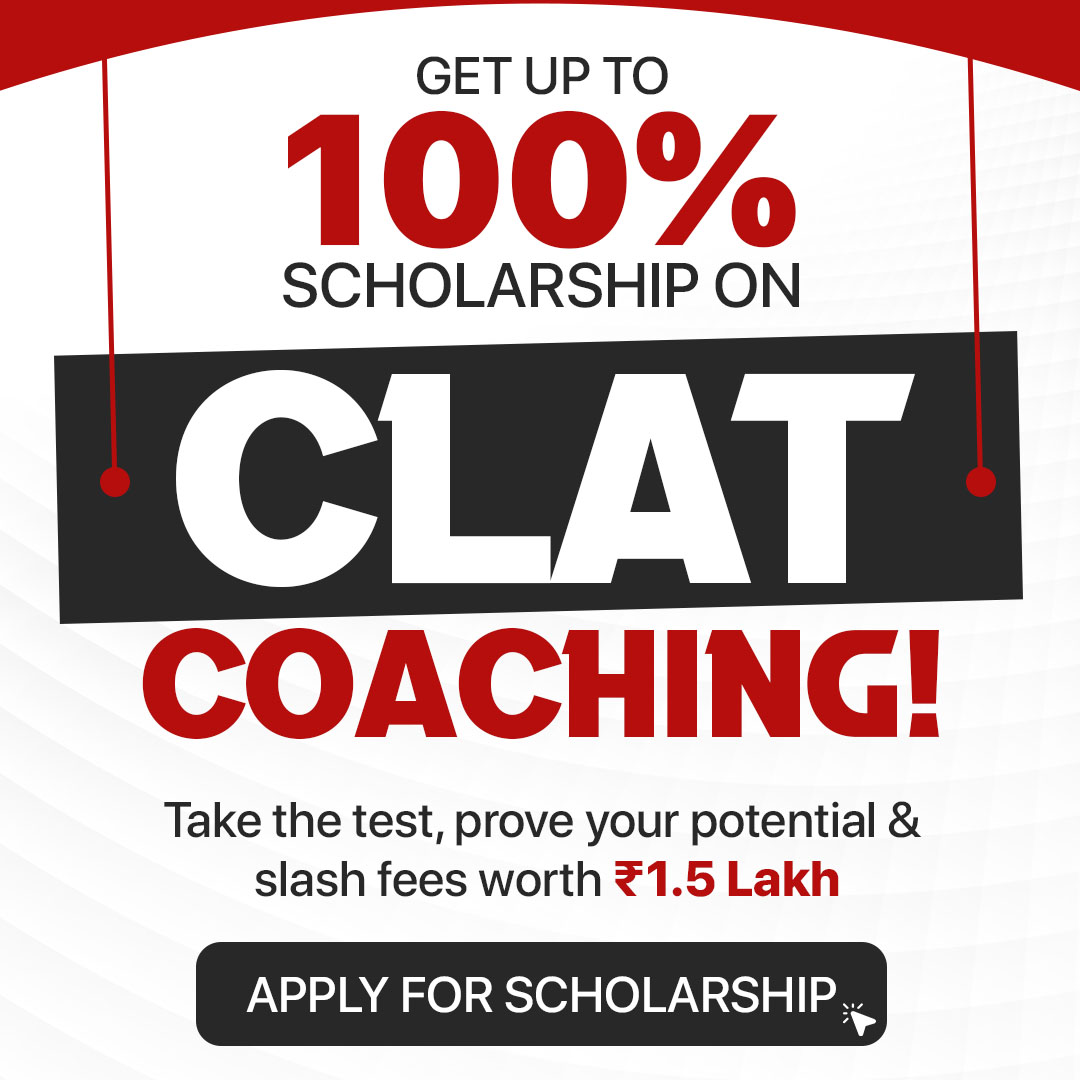10 October 2025 Current Affairs (With PDF)
Stay updated with 10 October 2025 Current Affairs on this page! We bring you the most relevant and important news updates from around the world and India, specially curated for competitive exams and different entrance exams. Today's Current Affairs cover all significant national and international headlines, legal updates, economic news, and environmental highlights to boost your preparation. With our crisp, to-the-point coverage, you can confidently tackle current affairs questions in your exams.
NITI Aayog Launches AI Roadmap to Empower India’s 490 Million Informal Workers
NITI Aayog has released a comprehensive roadmap on Artificial Intelligence (AI) aimed at harnessing frontier technologies to enhance livelihoods, productivity, and inclusion for India’s vast informal workforce.
Current Status of Informal Workers in India
- Largest Employment Base: Comprises about 90% of India’s total labour force.
- Low Productivity: Average output is around $5 per hour — nearly half the national average.
- Limited Social Security: Only 48% have any form of coverage.
Major Challenges:
- Financial Instability: Irregular wages, lack of contracts, delayed payments.
- Poor Market Access: Limited digital visibility and fragmented demand linkages.
- Skill Deficit: Only 2–5% possess formal or vocational training.
- No Social Protection: Minimal occupational safety, insurance, or pension coverage.
- Low Digital Integration: Manual workflows with little access to mechanization or digital tools.
Key Recommendations
- Mission Digital ShramSetu: A national AI-driven mission to upskill and digitally empower informal workers.
- Inclusive AI Infrastructure: Promote multilingual, voice-first AI tools to overcome literacy and language barriers.
- Collaborative Implementation: Engage state governments, local bodies, and community networks for localized action.
- Integration with Existing Schemes: Link AI-based solutions with e-Shram and UDYAM platforms for real-time benefit delivery.
National Labour & Employment Policy – “Shram Shakti Niti 2025”
- Ministry of Labour & Employment Releases Draft ‘Shram Shakti Niti 2025’ — National Labour and Employment Policy Framework.
- Draft ‘Shram Shakti Niti 2025’ Envisions Fair, Inclusive, and Future-Ready Work Aligned with India’s 2047 Development Goals.
Key Strategic Objectives
- Universal and Portable Social Security:
- Creation of a Universal Social Security Account (USSA) by integrating schemes such as EPFO, PM-JAY, and e-SHRAM, ensuring seamless coverage for all workers.
- Occupational Safety and Health (OSH):
- Enforce the OSH Code, 2020 with risk-based inspections and gender-sensitive workplace standards.
- Employment and Future Readiness:
- Reposition MoL&E as an employment facilitator using the National Career Service (NCS) as the core Digital Public Infrastructure for Employment.
- Women and Youth Empowerment:
- Target to increase women’s labour force participation to 35% by 2030 through focused skilling and inclusion measures.
- Ease of Compliance & Formalization:
- Establish a single-window digital compliance system enabling self-certification and simplified returns for MSMEs.
- Technology & Green Transition:
- Promote green jobs and leverage digital technologies to foster sustainable and inclusive employment.
- Institutional Coherence:
- Ensure data integration and policy coherence across jurisdictions via a unified digital labour-governance framework.
Nobel Prize in Chemistry 2025
Royal Swedish Academy of Sciences Announces 2025 Nobel Prize in Chemistry.
Laureates:
- Susumu Kitagawa (Japan)
- Richard Robson (Australia)
- Omar Yaghi (USA)
Awarded For:
Their pioneering role in developing the first Metal–Organic Frameworks (MOFs) — a revolutionary class of crystalline materials with vast internal surface areas and tunable porosity.
About Metal–Organic Frameworks (MOFs)
- Definition: MOFs are molecular architectures made of metal ions connected by organic linkers, forming three-dimensional porous networks with enormous internal surface area.
- Analogy: Like Hermione Granger’s handbag in Harry Potter, MOFs can store vast quantities of material within a tiny volume.
- Structure Highlights:
- Built from metal–oxygen clusters (nodes) and organic units (linkers).
- Porous 3D frameworks act as molecular hotels, with each pore acting like a “room” designed for selective molecules.
- One gram of MOF can expose a surface area equivalent to a football field.
Applications of MOFs
|
Sector |
Application |
Purpose |
|
Water Harvesting |
Capture water vapour from desert air at night, release drinkable water by day. |
Climate resilience |
|
Pollution Control |
Remove PFAS (forever chemicals), decompose crude oil, antibiotics, and pollutants. |
Environmental protection |
|
Industry |
Mine rare-earth elements from wastewater; store hydrogen; capture CO₂. |
Green industry & carbon management |
|
Healthcare |
Deliver pharmaceuticals, manage toxic gases, encapsulate enzymes to degrade pollutants. |
Drug delivery & biosafety |
Significance
- MOFs represent a revolution in materials chemistry, offering customizable porosity and selective molecular trapping.
- Applications span clean energy, water security, medicine, and environmental sustainability.
- Over tens of thousands of MOF variants have been developed globally based on the laureates’ foundational research.
Pradhan Mantri Kisan Urja Suraksha evam Utthan Mahabhiyan (PM–KUSUM)
India plans to scale up the PM-KUSUM scheme and share its model with other developing nations through the International Solar Alliance (ISA).
About PM–KUSUM
1. Launched:
- 2019
2. Nodal Ministry:
- Ministry of New and Renewable Energy (MNRE)
3. Objective:
- Ensure energy and water security for farmers.
- De-dieselise the agricultural sector.
- Promote renewable energy and reduce carbon emissions.
Targets
- Add solar capacity: ~34,800 MW by March 2026.
- Aim: Empower farmers as “prosumers” (producers + consumers) of clean energy.
Key Components
- Component A: Installation of 10,000 MW of decentralized, grid-connected solar power plants (up to 2 MW each) on barren/fallow lands.
- Component B: Deployment of stand-alone solar pumps for irrigation, reducing diesel pump usage.
- Component C: Solarization of existing grid-connected pumps, including feeder-level solarization to enable surplus energy sale to DISCOMs.
Significance
- Reduces farmers’ electricity costs.
- Boosts rural income through sale of excess solar power.
- Contributes to India’s renewable energy goals and climate commitments.
Electronic Bank Guarantees (e-BGs)
The National e-Governance Division (NeGD) and National E-Governance Services Limited (NeSL) have signed an MoU to integrate digital document execution for issuing Electronic Bank Guarantees (e-BGs).
About e-BGs
- An Electronic Bank Guarantee (e-BG) is a digitally issued and stored version of a traditional bank guarantee.
- It eliminates physical paperwork, reducing processing time and the risk of fraud or document loss.
- It enables real-time verification and faster delivery to beneficiaries.
What is a Bank Guarantee?
A Bank Guarantee (BG) is a financial instrument issued by a bank promising to pay a beneficiary if the applicant (bank’s client) fails to meet contractual or financial obligations.
About NeSL
- National E-Governance Services Ltd (NeSL) is India’s first Information Utility (IU) under the Insolvency and Bankruptcy Code (IBC).
- Registered with: Insolvency and Bankruptcy Board of India (IBBI).
- Function: Acts as a trusted repository of legal evidence for debts, loans, and claims, ensuring transparency and authenticity.
Plutonium Management and Disposition Agreement (PMDA)
Russia’s State Duma (Lower House) has approved the country’s withdrawal from the Plutonium Management and Disposition Agreement (PMDA) with the United States.
(Russia had earlier suspended implementation in 2016, citing U.S. sanctions and non-compliance.)
About PMDA
- Signed: 2000
- Parties: United States & Russia
- Objective: Each nation agreed to irreversibly dispose of at least 34 metric tons of weapons-grade plutonium—enough for thousands of nuclear weapons.
- Disposition Methods: Convert plutonium into Mixed Oxide (MOX) fuel for nuclear reactors.
- Irradiate it in reactors to render it unusable for weapons purposes.
About Plutonium
- Symbol: Pu | Atomic Number: 94
- Nature: Radioactive metal, silvery-gray, with a high melting point.
- Significance: Key material in nuclear weapons and reactor fuel.
- One of the heaviest naturally occurring elements (though most plutonium is now man-made).
Significance of Withdrawal
- Reflects a breakdown in nuclear arms control cooperation between the U.S. and Russia.
- Undermines efforts toward non-proliferation and nuclear disarmament.
- May signal rising strategic tensions amid global security shifts.
The Great Green Wall Initiative
Despite its ambitious vision, the Great Green Wall (GGW) project continues to face major challenges in implementation across Africa.
Overview
- Launched: 2007
- By: African Union (AU)
- Region Covered: The Sahel Region, a semi-arid zone bordering the Sahara Desert.
Objectives (by 2030)
- Restore: 100 million hectares of degraded land.
- Sequester: 250 million tonnes of carbon.
- Create: 10 million green jobs.
- Promote: Sustainable land management and increase arable land.
Significance
- Designed as a natural barrier to halt the southward expansion of the Sahara Desert.
- Aims to combat climate change, drought, food insecurity, conflict, and forced migration.
- Supports ecosystem restoration and livelihood resilience in fragile dryland ecosystems.
Agrienics Programme
The Ministry of Electronics and Information Technology (MeitY) has announced the transfer of technology developed under the Agrienics Programme.
About the Agrienics Programme
- Nodal Ministry: Ministry of Electronics and Information Technology (MeitY)
- Implementing Agency: Centre for Development of Advanced Computing (C-DAC), Kolkata
- Nature: A national programme focused on integrating electronics, ICT, and emerging technologies with the agriculture and environment sectors.
Objectives
- To promote research, development, deployment, demonstration, and commercialization of advanced technologies for agricultural and environmental applications.
- To enhance farm productivity, resource efficiency, and sustainability through digital and electronic innovations.
- To foster technology-driven rural transformation and strengthen India’s AgriTech ecosystem.
Significance
- Supports precision agriculture, environmental monitoring, and climate-smart solutions.
- Encourages indigenous technology development for farmers and agri-enterprises.
- Aligns with Digital India and Atmanirbhar Bharat initiatives.
All Set with 10 October Current Affairs? Let’s Quiz!
Ready to put your knowledge to the test? Take our daily quiz now and reinforce what you learned!
10 October 2025 Current Affair Quiz
Why is 10 October 2025 Current Affairs Important for You?
- Essential for Exams: The Current Affairs of 10 October 2025 cover topics that are often asked in competitive exams.
- Boosts Your Knowledge: Helps you stay informed about the latest events and updates.
- Improves Accuracy: Daily practice with Current Affairs of 10 October 2025 improves your speed and accuracy in exams.
- Quick Revision: Acts as a daily revision tool for upcoming exams.
- Saves Time: You don’t need to search multiple sources; everything is here in one place!
- Helps in Interviews: Being updated with Current Affairs of 10 October 2025 gives you confidence for personal interviews and group discussions.
How to Use 10 October 2025 Current Affairs for Exam Preparation?
- Read Properly: Go through the 10 October 2025 Current Affairs to stay updated.
- Make Notes: Summarize key points and important updates in your own words.
- Link with Syllabus: Identify topics relevant to your exam and connect them with your syllabus.
- Practice Daily Quizzes: Test your knowledge by taking daily quizzes based on 10 October 2025 Current Affairs.
- Revise Often: Review the updates multiple times to boost your recall and confidence.
- Discuss with Peers: Join discussions and share insights to deepen your understanding.
Get Daily Updates and Stay Ahead!
Law Prep Tutorial is committed to giving you the best daily current affairs updates to help you excel in various exams. Our platform is trusted by thousands of toppers for timely, accurate, and concise updates that matter most for your exams. Explore our dedicated sections below:

- Related Articles
-
15,Dec 2025
-
15,Dec 2025
-
12,Dec 2025
-
11,Dec 2025
-
10,Dec 2025
-
09,Dec 2025
-
08,Dec 2025
-
08,Dec 2025



 Download as PDF
Download as PDF
